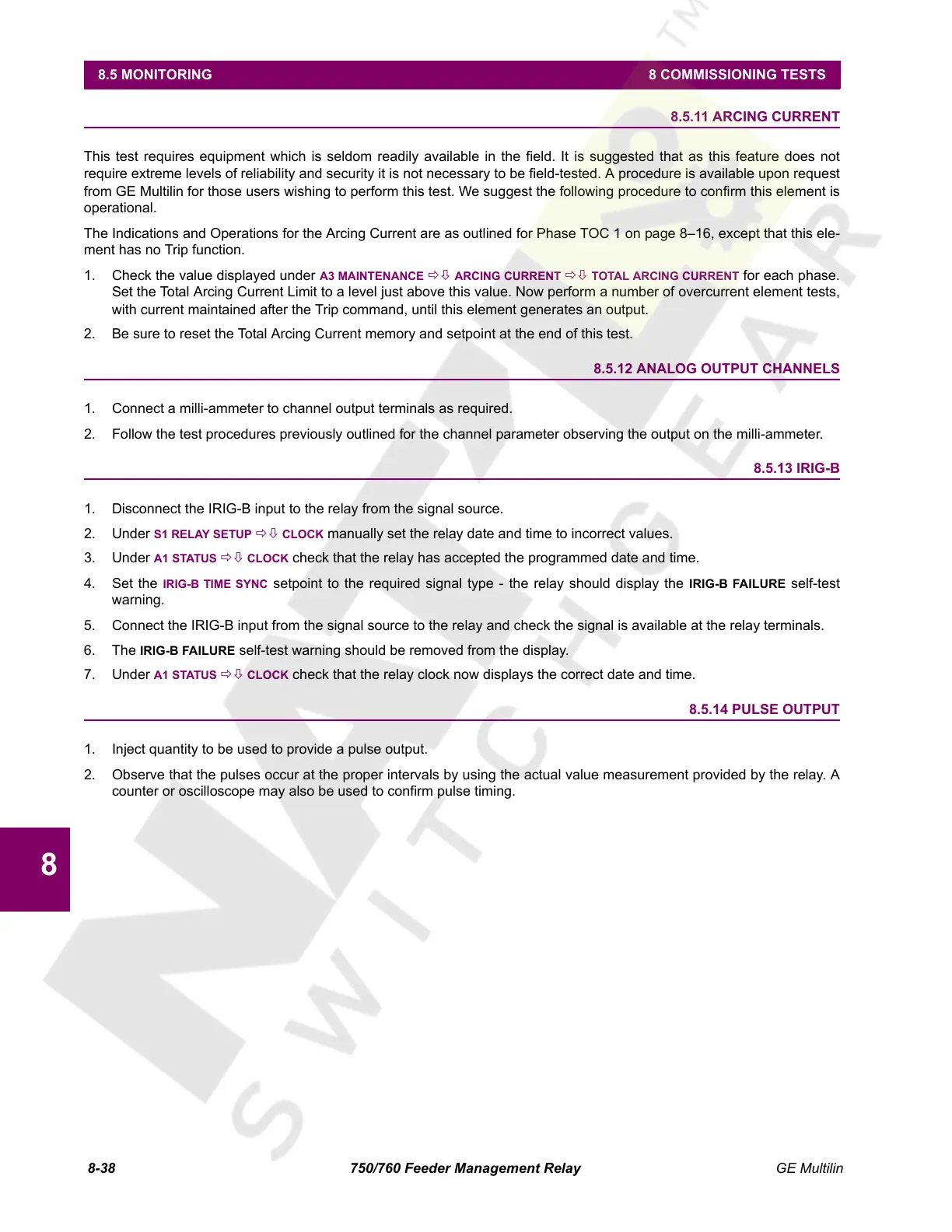8-38 750/760 Feeder Management Relay GE Multilin
8.5 MONITORING 8 COMMISSIONING TESTS
8
8.5.11 ARCING CURRENT
This test requires equipment which is seldom readily available in the field. It is suggested that as this feature does not
require extreme levels of reliability and security it is not necessary to be field-tested. A procedure is available upon request
from GE Multilin for those users wishing to perform this test. We suggest the following procedure to confirm this element is
operational.
The Indications and Operations for the Arcing Current are as outlined for Phase TOC 1 on page 8–16, except that this ele-
ment has no Trip function.
1. Check the value displayed under
A3 MAINTENANCE ÖØ ARCING CURRENT ÖØ TOTAL ARCING CURRENT for each phase.
Set the Total Arcing Current Limit to a level just above this value. Now perform a number of overcurrent element tests,
with current maintained after the Trip command, until this element generates an output.
2. Be sure to reset the Total Arcing Current memory and setpoint at the end of this test.
8.5.12 ANALOG OUTPUT CHANNELS
1. Connect a milli-ammeter to channel output terminals as required.
2. Follow the test procedures previously outlined for the channel parameter observing the output on the milli-ammeter.
8.5.13 IRIG-B
1. Disconnect the IRIG-B input to the relay from the signal source.
2. Under
S1 RELAY SETUP ÖØ CLOCK manually set the relay date and time to incorrect values.
3. Under
A1 STATUS ÖØ CLOCK check that the relay has accepted the programmed date and time.
4. Set the IRIG-B TIME SYNC setpoint to the required signal type - the relay should display the IRIG-B FAILURE self-test
warning.
5. Connect the IRIG-B input from the signal source to the relay and check the signal is available at the relay terminals.
6. The IRIG-B FAILURE self-test warning should be removed from the display.
7. Under
A1 STATUS ÖØ CLOCK check that the relay clock now displays the correct date and time.
8.5.14 PULSE OUTPUT
1. Inject quantity to be used to provide a pulse output.
2. Observe that the pulses occur at the proper intervals by using the actual value measurement provided by the relay. A
counter or oscilloscope may also be used to confirm pulse timing.
Courtesy of NationalSwitchgear.com

